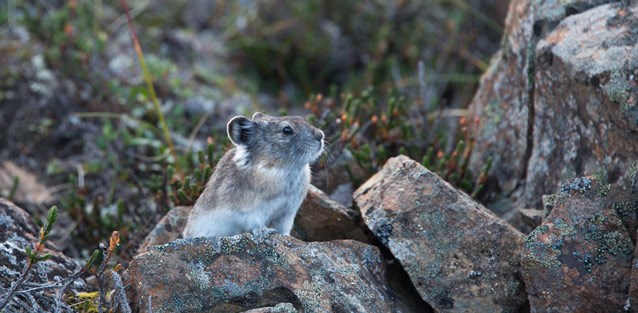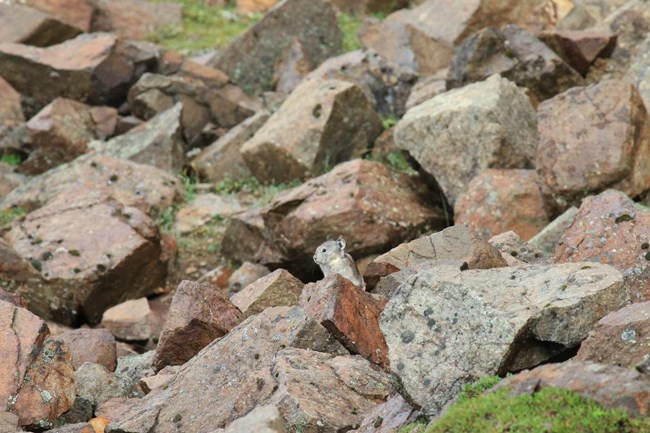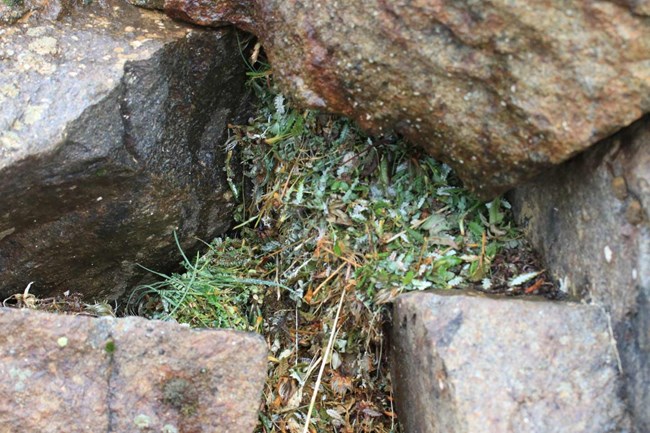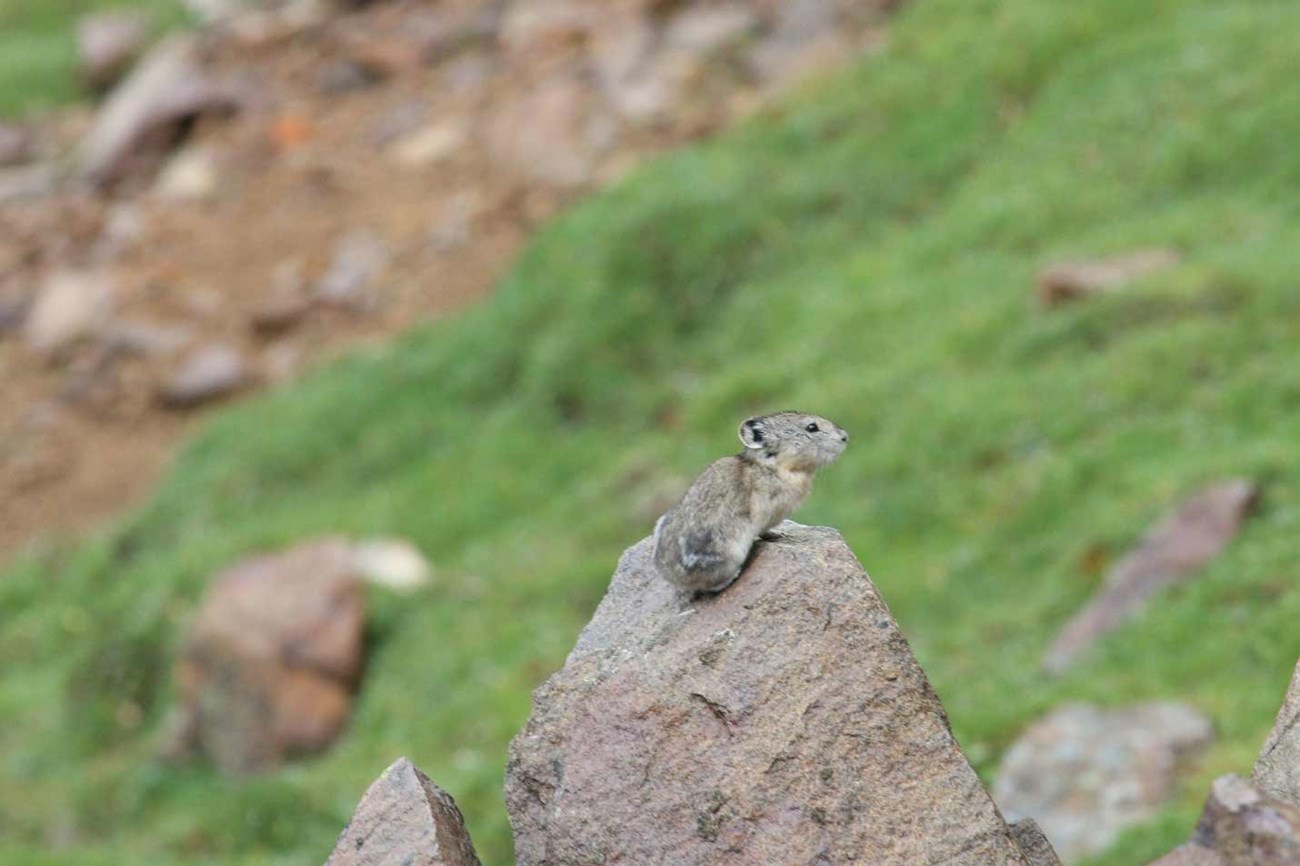Last updated: July 1, 2020
Article
Collared Pika

NPS Photo / Lian Law

Jen Wall
In order to survive all winter long, they spend the summer gathering plants, drying them in the sun, and then storing them as “hay piles” amongst and under the rocks. They even store toxic plants, like the Alpine avens, to use as a preservative, and wait to eat it until the toxic chemicals break down and it’s safe to eat.

Jen Wall
They are about the size of a small rat or guinea pig and live in colonies. Their alarm call sounds like the high-pitched squeak of a dog toy- so if you hear a toy-like squeak, be on the lookout for collared pika.

Jen Wall
Current IUCN Listing: Least Concern
For more information, visit the Alaska Department of Fish and Game
Tags
- denali national park & preserve
- gates of the arctic national park & preserve
- katmai national park & preserve
- kenai fjords national park
- lake clark national park & preserve
- noatak national preserve
- wrangell - st elias national park & preserve
- wildlife
- mammals
- collared pika
- pika
- climate change effects
- alaska
- climate change
- alpine
